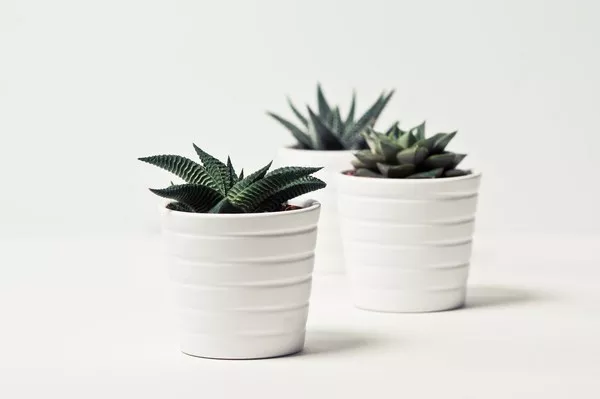Jade plants (Crassula ovata), with their thick, succulent leaves and tree-like appearance, are ideal candidates for bonsai cultivation. Pruning is a crucial technique in shaping these plants into bonsai, enhancing their aesthetic appeal and maintaining their health. In this comprehensive guide, we will delve into the art and techniques of pruning jade plants to achieve stunning bonsai forms.
Understanding Jade Plants and Bonsai
1. Characteristics of Jade Plants
Jade plants are native to South Africa and are popular as houseplants worldwide due to their resilience and distinctive appearance. They feature thick, fleshy leaves that store water, making them drought-tolerant and easy to care for. In their natural form, jade plants can grow into small shrubs or even small trees, which makes them suitable for bonsai cultivation.
2. Bonsai Art: A Brief Overview
Bonsai is a traditional Japanese art form that involves cultivating miniature trees in containers. It combines horticultural techniques with artistic principles to create living sculptures that reflect the harmony of nature. Pruning is one of the primary techniques used in bonsai to shape the tree and maintain its size and proportions.
See Also: Is Jade Plant an Air Purifier?
Getting Started with Pruning Jade Plants
1. Tools Required for Pruning
Before you begin pruning your jade plant, gather the necessary tools:
- Pruning shears: Used for cutting branches and thicker stems.
- Bud trimming shears: Ideal for precise pruning of smaller branches and foliage.
- Wire cutters: Essential for removing wires used in shaping bonsai.
- Concave cutters: Optional but useful for making clean cuts on thicker branches.
Ensure that your tools are sharp and clean to minimize damage to the plant and reduce the risk of infection.
2. Understanding Pruning Goals
When pruning a jade plant into bonsai, your goals may include:
- Structural refinement: Shaping the overall structure of the bonsai.
- Size control: Keeping the bonsai compact and proportional to its container.
- Branch development: Encouraging the growth of branches in desired directions.
- Health maintenance: Removing dead, diseased, or overcrowded branches to promote vigor.
Techniques for Pruning Jade Plants
1. Structural Pruning
Structural pruning focuses on shaping the overall form of the jade bonsai. Follow these steps:
- Identify the trunk line: Decide on the desired trunk line or lines that will define the bonsai’s structure.
- Remove unwanted growth: Trim away branches and shoots that do not contribute to the desired design.
- Encourage taper: Maintain a gradual decrease in branch and trunk thickness from base to apex, mimicking the appearance of mature trees.
2. Branch Pruning
Branch pruning is crucial for maintaining the bonsai’s shape and size:
- Identify primary branches: Choose which branches will form the main structure of the bonsai.
- Apical dominance: Encourage upward growth by pruning back to a bud or node that faces the desired direction.
- Remove crossing branches: Eliminate branches that cross each other to prevent rubbing and potential damage.
3. Leaf Pruning and Maintenance
Jade plants have thick, succulent leaves that can be pruned to refine the bonsai’s appearance:
- Reduce leaf size: Trim larger leaves to maintain proportionality with the bonsai’s reduced scale.
- Leaf thinning: Thin out dense foliage to improve light penetration and airflow, which promotes overall plant health.
- Defoliation: Periodically removing old leaves can stimulate new growth and enhance ramification (branching).
Advanced Techniques and Tips
1. Wiring and Shaping
Wiring is a technique used to bend and shape branches of the bonsai:
- Selecting appropriate wire: Choose aluminum or copper wire of the correct thickness for the branch you are shaping.
- Techniques: Wrap the wire around branches in gentle curves, avoiding excessive bending that could damage the branch.
- Timing: Wire branches during the growing season when the plant is actively producing new growth and is more flexible.
2. Dealing with Challenges
Pruning jade plants into bonsai can present challenges:
- Overcoming legginess: If your jade plant becomes leggy (with elongated stems), prune back to encourage branching and compact growth.
- Managing pests and diseases: Inspect your bonsai regularly for signs of pests (e.g., spider mites, mealybugs) and diseases (e.g., root rot). Prune affected parts promptly and treat with appropriate measures.
3. Maintenance and Care
Regular maintenance is essential for the health and longevity of your jade bonsai:
- Watering: Ensure the soil is well-drained but retains some moisture. Water when the top inch of soil feels dry.
- Fertilizing: Use a balanced fertilizer during the growing season to provide essential nutrients.
- Repotting: Repot your jade bonsai every 2-3 years to refresh the soil and prevent root binding.
- Seasonal considerations: Adjust your pruning and care routines based on the plant’s seasonal growth patterns.
Conclusion
Pruning jade plants into bonsai is a rewarding endeavor that combines artistic vision with horticultural skill. By mastering the techniques of structural and branch pruning, along with advanced methods such as wiring and shaping, you can create stunning jade bonsai that showcase the beauty and resilience of these remarkable plants. Remember, patience and attention to detail are key to developing a thriving jade bonsai that will bring joy for years to come.


